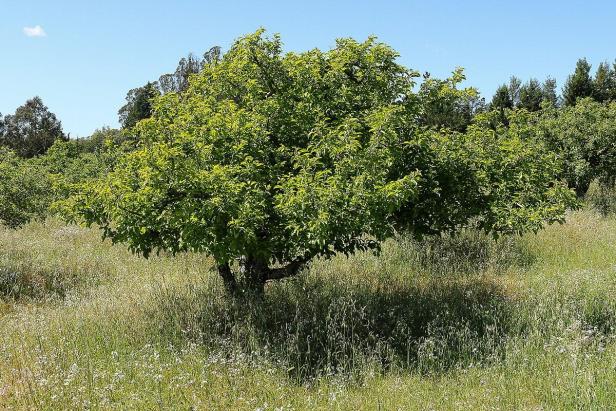 photo credit: Frank Schulenburg
photo credit: Frank SchulenburgA Gravenstein apple tree in an orchard near Sebastopol.
The second Trump administration has drastically changed all manner of federal agencies and programs.
That includes national agriculture programs that directly affect farmers and ranchers in the North Bay.
The changes are being acutely felt at California's many RCDs, Resource Conservation Districts.
Those are local, non-regulatory special districts with the mission to provide technical and financial assistance to landowners for conservation projects.
According to a statewide association, RCDs were first founded after the Dust Bowl in the 1930's to help farmers and ranchers voluntarily conserve water, soil, and wildlife habitat on their land with the help of a local and neutral partner.
Here in the North Bay, the Marin, Sonoma, and Gold Ridge RCDs have been left in limbo because of changes to a $10 million federal grant for agricultural conservation and resilience projects.
$7 million dollars of that grant remains unspent.
The money was originally awarded under a program called the 'Partnerships for Climate-Smart Commodities,' but that was changed in April to the "Advancing Markets for Producers" (AMP) initiative, said Brittany Jensen.
"Basically what happened is we had to redo our whole grant," Jensen said.
Jensen is head of the Gold Ridge Resource Conservation District.
The biggest change, Jensen said, is where the federal dollars get sent to.
Jensen said the way it used to work was, "say a farmer wanted to apply compost and plant some trees and maybe upgrade some infrastructure to make it emit less [greenhouse gasses], basically the RCDs would pay for those practices," Jensen said. "So we would kind of hire the contractors and do the work and then we would pay those folks directly."
Jensen said the money didn't actually go directly through the farmer's hands, or bank account.
"That's generally the preference of farmers to my understanding," Jensen said. "Because otherwise they put a bunch of money out of pocket and then have to wait to be reimbursed."
Jensen said she's concerned because the new 'Advancing Markets for Producers' initiative requires landowners to front the costs for conservation projects, and that will make it harder for smaller scale producers to afford the cost of improvements like hedgerow planting and cover cropping.
For the time being, agency staff said they believe they've figured out a work-around for the 50-plus farmers and ranchers in Sonoma and Marin counties putting conservation practices into place.
"The County of Sonoma is the lead and in contract with USDA, and they have said they will pay farmers directly," Jensen said. "So we have kind of the complicated process where basically the RCDs are doing most of the work like planning the projects and verifying the projects, making sure they're done right, and like coordinating with the landowners, but it will be actually the County of Sonoma that's paying the farmers."

 Live Radio
Live Radio




